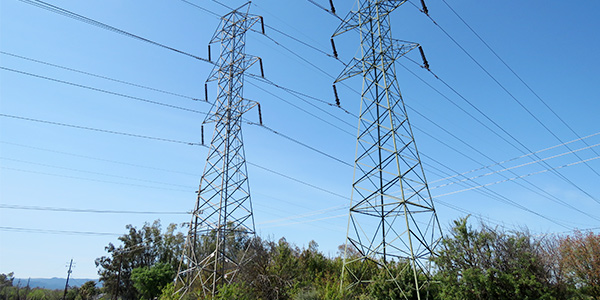FERC denied CAISO’s request to reconsider its rejection of the ISO’s proposal to adopt a “net export limit” to help entities in the Western Energy Imbalance Market avoid unintended consequences of market power mitigation.
But the commission’s June 18 order denying rehearing clarified that its initial ruling did not imply that unmitigated bids would be effective in determining LMPs for serving load in an import-constrained balancing authority area (BAA) subject to local market power mitigation (ER19-2347).
The commission’s Sept. 19, 2019, order nixed the ISO’s proposal to introduce a net export limit that would have allowed EIM entities to limit the additional dispatch of resources when resources’ bids are reduced because of their BAAs becoming subject to bid mitigation. (See CAISO Goes 2 for 3 on EIM Hydro Rule Changes.)
As FERC explained in its order, “the optional feature would [have allowed] EIM entities to limit net transfers out of the mitigated BAA to the greater of: (1) the pre-mitigation transfer quantity, or (2) the base transfer quantity, plus, for both (1) and (2), the sum of the flexible ramping up awards in the market power mitigation run in excess of the BAA’s flexible ramping-up requirement.”
CAISO intended to enforce the rule in both the 15-minute and real-time markets to ensure that every interval limit was determined separately.
In rejecting the provision, FERC ruled that it was “inconsistent” with the EIM’s market power mitigation framework and “not an appropriately calibrated solution to the concerns CAISO identifies.”
“In particular, CAISO’s proposal could weaken CAISO’s market power mitigation process by allowing EIM entities to withhold generation through the submission of high supply bids and restricting EIM transfers out of their BAAs,” the commission wrote.
In seeking rehearing, CAISO argued that there was no evidence supporting FERC’s conclusion that the proposed net export limit would encourage EIM entities to withhold generation. In fact, CAISO said, the net export limit would encourage suppliers to offer greater levels of supply into the EIM because “it was designed to eliminate the existing incentive for an EIM entity, if it wishes to limit the amount of energy that its resources may have to sell at mitigated prices, to only offer the minimum amount of required supply.”
FERC didn’t buy the argument.
“We are concerned that CAISO’s proposed incentive for greater participation in the EIM is likely to produce outcomes that are not just and reasonable. Contrary to CAISO’s assertions, the direct effect of the proposed net export limit would be to allow EIM entities to limit the dispatch of their resources if they are mitigated in the market power mitigation run,” FERC wrote.
In its motion for clarification, CAISO faulted FERC for “failing to explain how the existing local market power mitigation system and the participation in the proposed net export limit feature can result in ‘unmitigated bids … determin[ing] the dispatch to serve load outside of the EIM entities’ BAAs.’”
FERC said that wasn’t the case.
“We acknowledge that all supply bids in an import-constrained BAA would continue to be subject to mitigation under CAISO’s proposal. However, the proposed net export limit would allow an EIM entity to cap its net transfers and the restriction on supply would affect dispatch in the exporting BAA and in other BAAs,” it said.





